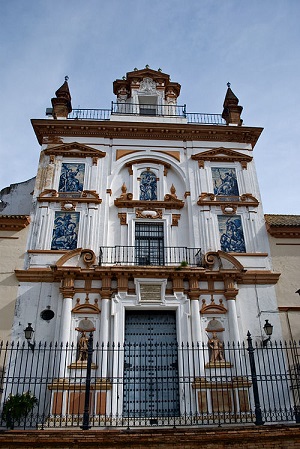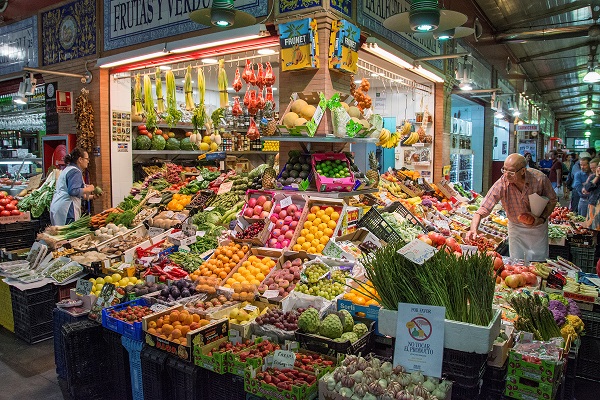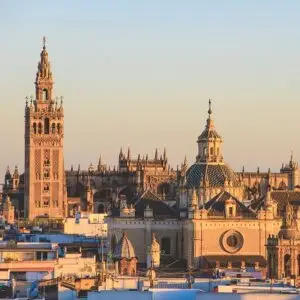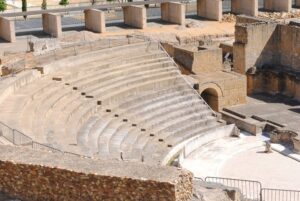Seville, the sun-drenched capital of Andalucía, is famed for its flamenco, tapas, and stunning Moorish architecture. While landmarks like the Alcázar, the Giralda, and Plaza de España are must-sees, the city’s lesser-known spots offer a richer, more intimate experience of Seville’s charm and history. Here are some hidden gems that are off the beaten tourist track but well worth a visit.
1. Hospital de la Caridad

Founded in the 17th century by the nobleman Miguel Mañara, the Hospital de la Caridad is an excellent example of Baroque architecture and artistry. This charitable hospital, still in operation today, is adorned with masterpieces by artists such as Murillo and Valdés Leal. The serene courtyard and the adjoining church, with its hauntingly beautiful art depicting the transience of life, provide a reflective space away from the city’s tourist hubs.
2. Callejón del Agua
Hidden in the labyrinthine streets of the Barrio de Santa Cruz, Callejón del Agua (Water Alley) is a narrow, winding alley that offers a serene and picturesque walk. Historically, this alley was part of the city’s ancient water system, channeling water from the aqueducts to the Alcázar. Today, it’s a romantic pathway lined with vibrant flowers, whitewashed walls, and the occasional trickle of water, making it a photographer’s dream and a peaceful escape from the tourist crowds.
3. Convento de Santa Paula
This working convent, founded in 1473, is a hidden treasure trove of religious art and Sevillian history. The nuns here still produce and sell traditional sweets, which you can purchase through a rotating hatch. The convent’s small museum houses an impressive collection of paintings, sculptures, and ceramics, providing a quiet and contemplative alternative to the more crowded museums in Seville.
4. Palacio de la Condesa de Lebrija
A true hidden gem on Seville’s bustling Calle Cuna, this palace is often overlooked despite housing one of the most impressive private collections of Roman mosaics in Spain. The Condesa de Lebrija, a passionate archaeologist, filled her home with archaeological treasures, from ancient mosaics to ceramics and sculptures. Walking through its richly decorated rooms and courtyards feels like stepping into a living museum.
5. Mercado de Triana

Located on the west bank of the Guadalquivir River, the Triana Market is a vibrant local market where you can experience the authentic flavors of Sevilla. This market, built on the site of the former Castillo de San Jorge, the headquarters of the Spanish Inquisition, offers everything from fresh seafood and meats to fruits, vegetables, and artisanal products. It’s an excellent place to sample local delicacies and mingle with the residents of the historic Triana neighborhood.
6. Jardines de Murillo
Just a stone’s throw from the Barrio de Santa Cruz, these gardens are often missed by visitors rushing to larger attractions. Shaded by towering palm and orange trees, the Jardines de Murillo are dotted with tiled benches, fountains, and monuments that invite you to pause and take in the slower rhythm of Seville. They are perfect for a quiet stroll or a short rest in the middle of a day’s sightseeing.
7. Palacio de las Dueñas
 This lesser-known palace is a beautiful example of Renaissance architecture mixed with Gothic and Moorish influences. It has been the residence of the Alba family since the 17th century and is filled with historical artifacts, antiques, and stunning gardens. The palace offers a glimpse into the aristocratic life of Seville and is a serene escape with its blooming courtyards and rich history.
This lesser-known palace is a beautiful example of Renaissance architecture mixed with Gothic and Moorish influences. It has been the residence of the Alba family since the 17th century and is filled with historical artifacts, antiques, and stunning gardens. The palace offers a glimpse into the aristocratic life of Seville and is a serene escape with its blooming courtyards and rich history.
8. Iglesia de San Luis de los Franceses
This Baroque church, hidden in the Macarena district, is a true architectural gem. Recently restored, its elaborate facade and richly decorated interior, filled with sculptures, paintings, and intricate carvings, make it one of the most beautiful churches in Seville. Its relatively hidden location means it’s often less crowded, allowing visitors to fully appreciate its grandeur in peace.
9. Casa de los Pinelo
Tucked away in a quiet street near the Cathedral, Casa de los Pinelo is a Renaissance palace that now houses the Real Academia Sevillana de Buenas Letras. Its stunning courtyard, filled with orange trees and surrounded by elegant arches, provides a tranquil retreat. The house also hosts various cultural events and exhibitions, offering a deep dive into Seville’s rich literary and artistic heritage.
10. Antigua Fábrica de Tabacos
Now part of the University of Seville, the former Royal Tobacco Factory is one of the city’s most imposing buildings. Once the largest industrial building in Spain, it employed thousands of cigar-rolling women—las cigarreras—immortalized in Bizet’s opera Carmen. Exploring its courtyards and monumental halls offers a fascinating glimpse into Seville’s industrial past and its role in cultural history.
.
Exploring these hidden gems will enrich your visit to Seville, revealing layers of history, culture, and beauty that are often missed by the typical tourist itinerary. Each of these spots offers a unique perspective on the city’s vibrant past and present, making your experience of Seville truly unforgettable.
Related articles

Top 10 places to visit in Seville
Seville could be described as a grand city. The architects of its cathedral are famed to have said “Let’s build

10 day trips from Seville you should not miss
A visit to the city of Seville offers plenty to see, but if you have more than a few days

The vibrant fiestas of Seville: culture, tradition & joy
What truly sets Seville apart are its vibrant fiestas. These celebrations, deeply rooted in tradition, offer visitors a unique glimpse

9 dishes typical of Seville that will make you say “Olé!”
When it comes to food, Seville’s gastronomy is a testament to its diverse cultural influences, blending Moorish, Jewish, and Christian
